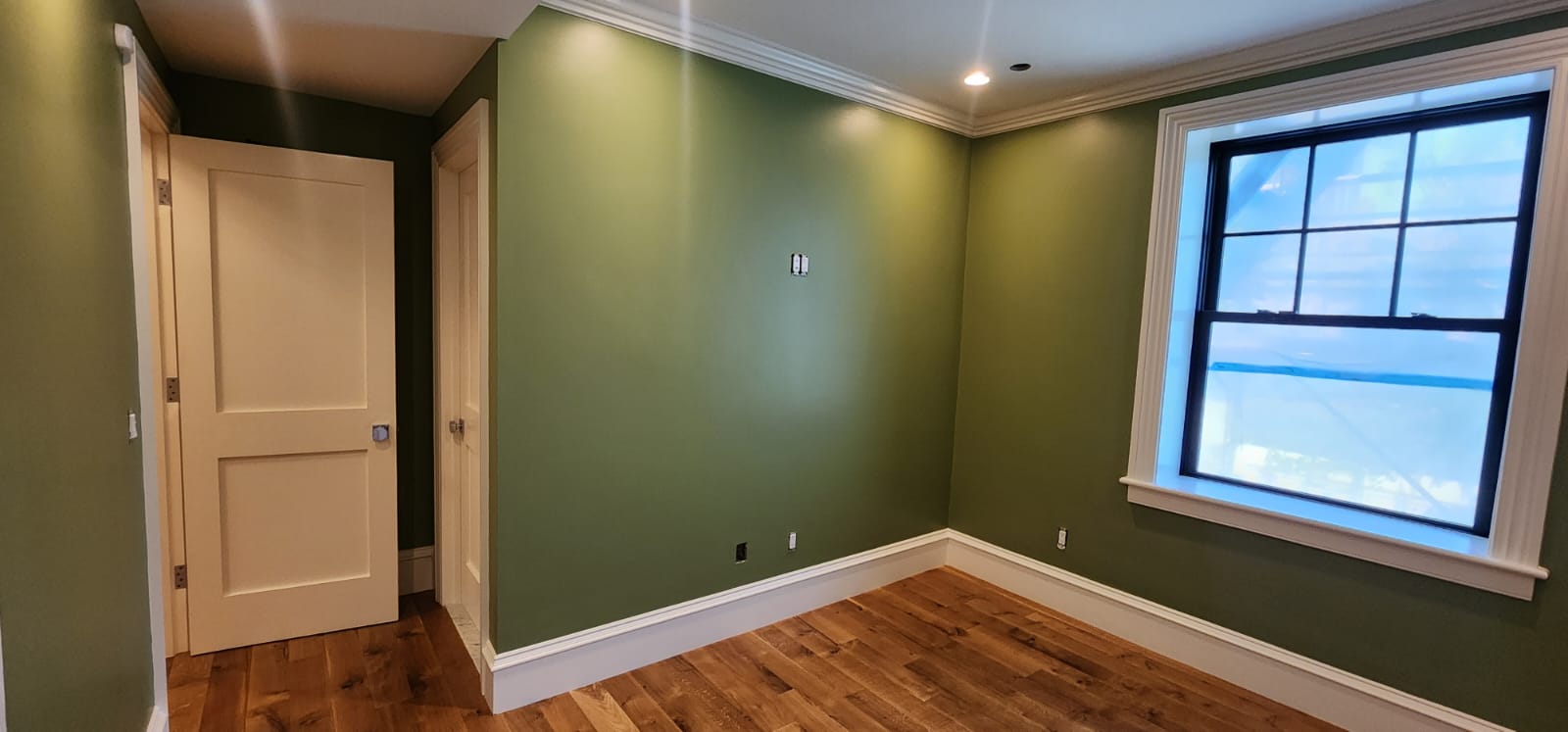Blogs

Best Paint for Baseboards | Durable & Smooth Finishes
Baseboards are the unsung heroes of interior trim. They provide a finished transition between walls and floors, protect the lower wall from scuffs and bumps, and add a crucial architectural detail that defines a room's aesthetic. Because they endure daily abuse from foot traffic, vacuum cleaners, and cleaning mops, choosing the right paint for your baseboards is paramount. It's not just about color; it's about selecting a finish that's durable, easy to clean, and maintains a sleek appearance for years to come.
Key paint qualities for baseboards
When selecting paint for baseboards, three primary qualities should guide your choice. These ensure that your baseboards not only look good but also stand up to the rigors of everyday life.
Durability
Resistance to Scuffs and Chips: Baseboards are constantly in the line of fire from shoes, furniture, pets, and cleaning equipment. The paint needs to form a hard, resilient film that can resist scratches, chips, and scuff marks without flaking or peeling.
Impact Resistance: Accidental bumps from vacuums or toys are common. A durable paint will absorb these minor impacts without cracking or denting.
Flexibility: While less critical than for exterior trim, the paint should have some flexibility to move slightly with the wood (if applicable) due to minor temperature and humidity changes without cracking.
Sheen level (Semi-Gloss vs. Satin)
The sheen level dictates how much light the paint reflects and directly impacts both the appearance and the practical performance of the baseboards.
Semi-Gloss:
Pros: This is the most traditional and popular choice for baseboards and all trim. It has a noticeable shine that highlights architectural details, creates a clean, crisp line against walls, and is exceptionally durable and easy to clean. The higher sheen makes scuffs less noticeable than on flatter finishes.
Cons: Its reflectivity can highlight imperfections in the wood or application if not perfectly smooth.
Satin (or Low-Sheen/Eggshell):
Pros: Offers a softer, more subtle sheen than semi-gloss, providing a contemporary look. It's still quite durable and washable, and it tends to hide minor surface imperfections better than semi-gloss. It's a good choice if you want the trim to be less "stark" against the walls.
Cons: While durable, it may not be as scuff-resistant as a semi-gloss in extremely high-traffic areas.
Avoid:
Flat/Matte: These finishes are too porous and not durable enough for baseboards. They will scuff easily, absorb dirt, and be very difficult to clean.
High-Gloss: While extremely durable and reflective, high-gloss can be overpowering on baseboards and magnify every imperfection, making it difficult to achieve a flawless look.
Easy-to-clean surface
Washability: Baseboards collect dust, dirt, and often encounter spills or splashes. The paint must be formulated to withstand frequent wiping and cleaning with mild soap and water without the finish degrading, dulling, or rubbing off.
Stain Resistance: The ability to resist common household stains (e.g., shoe scuffs, pet marks) and allow them to be wiped away effortlessly.
Recommended paint products & brands
For baseboards, you'll want to look for paints specifically formulated as trim paints or door and trim enamels. These products are engineered with the durability and finish qualities required.
100% Acrylic Latex Enamels:
Why they're best: Modern acrylic latex enamels are highly recommended for baseboards. They combine excellent durability and hardness with superior flexibility, which helps prevent cracking. They are low-VOC, quick-drying, and easy to clean up with water. They resist yellowing over time, unlike many oil-based alternatives.
Features to look for: "Acrylic enamel," "trim paint," "door & trim paint," "urethane-modified acrylic" (for enhanced hardness and scuff resistance).
Recommended Brands (Examples):
Sherwin-Williams Emerald Urethane Trim Enamel: A top-tier choice known for its exceptional hardness, durability, and smooth finish. It's a professional favorite for high-traffic trim.
Benjamin Moore Advance: A premium alkyd-modified waterborne paint that offers the self-leveling and hard finish of oil-based paint with the easy cleanup and lower VOCs of a water-based product. Excellent for a very smooth, durable finish.
Behr Premium Plus Enamel Interior Semi-Gloss or Satin: A readily available and reliable option from major home improvement stores, offering good durability and a smooth finish for its price point.
Valspar Signature or Reserve Interior Semi-Gloss: Another popular choice that delivers good performance and a wide range of colors.
Alkyd (Oil-Based) Enamels (Less Common Now):
Why they were used: Historically favored for their extremely hard, durable, and smooth finish. They level out beautifully, leaving very few brush marks.
Considerations: Traditional alkyd paints have longer drying times, high VOCs, and require mineral spirits for cleanup. They are also prone to yellowing over time, especially in areas with low light exposure. Due to environmental regulations and the advancement of water-based technologies, their use has significantly declined.
Best For: Specific situations where an incredibly hard, ultra-smooth finish is paramount, or for matching existing oil-based trim in older homes, though modern alkyd-modified acrylics largely bridge this gap without the drawbacks.
Primer Recommendation: Always use a high-quality interior primer before painting baseboards, especially if they are new, bare wood, previously stained, or if you are making a drastic color change. A good primer ensures excellent adhesion, blocks stains, and provides a uniform surface for the topcoat, contributing significantly to the paint's durability and finish quality. Look for a fast-drying acrylic latex primer.
Tips for flawless application
Achieving a professional-looking finish on your baseboards requires attention to detail and proper technique.
Prepare the Baseboards Thoroughly:
Clean: Wipe down baseboards with a damp cloth to remove all dust, dirt, and grime. For stubborn residue, use a mild cleaner. Allow to dry completely.
Inspect and Repair: Fill any nail holes, dents, or cracks with wood filler or spackle. Sand smooth once dry.
Sand Lightly: Lightly scuff existing painted baseboards with 180-220 grit sandpaper. For new or bare wood, sand thoroughly. This creates "tooth" for the paint to adhere to. Remove all sanding dust.
Tape (Optional but Recommended): Use high-quality painter's tape (like FrogTape or 3M Scotch Blue Painter's Tape) along the top edge where the baseboard meets the wall, and along the bottom edge where it meets the floor. Press firmly to seal the edges and prevent bleed-through. Remove tape when the paint is still wet (or slightly tacky) for the cleanest lines.
Prime (Essential for New/Bare Wood):
Apply one thin, even coat of a high-quality interior primer. This is crucial for adhesion and uniform color, especially if changing color dramatically or painting new trim. Allow to dry completely.
Use Quality Brushes:
Invest in good quality angled sash brushes (1.5 to 2.5 inches wide) with synthetic bristles for latex paints. A good brush will hold more paint, provide better control, and leave fewer brush marks.
Application Technique:
Two Thin Coats: Always apply two thin, even coats of paint instead of one thick coat. Thin coats dry harder, cure more completely, and are much less prone to drips, sags, or cracking.
Load Brush Properly: Don't overload your brush. Dip only about one-third of the bristles into the paint.
Smooth Strokes: Apply paint in long, smooth, consistent strokes, working from one end of the baseboard to the other as much as possible. Work with the grain if the baseboard has one.
Avoid Overworking: Don't keep brushing paint once it starts to set up (get tacky), as this will create brush marks.
Allow Proper Drying Time: Adhere strictly to the manufacturer's recommended drying times between coats. This is crucial for adhesion and durability.
Clean Up: Clean brushes and tools immediately after use with soap and water (for latex paints) or mineral spirits (for oil-based paints).
Ready to give your baseboards a durable, beautiful, and sleek finish that truly makes your rooms shine? Contact Masterpiece Painter today for an expert consultation and a flawless paint job that lasts!
About Masterpiece Painter
For over 17 years Masterpiece Painter, has been serving communities all around New England. Let us help you make your wishes come true by turning your property into a Masterpiece
Get a Quote

© copyright 2023 All Rights Reserved.



